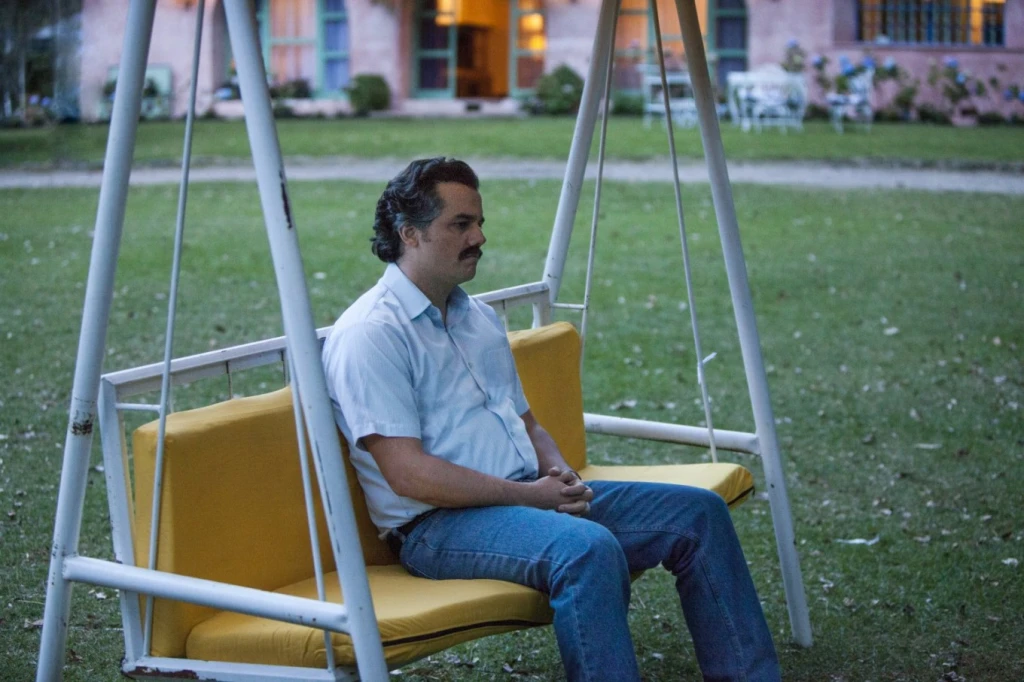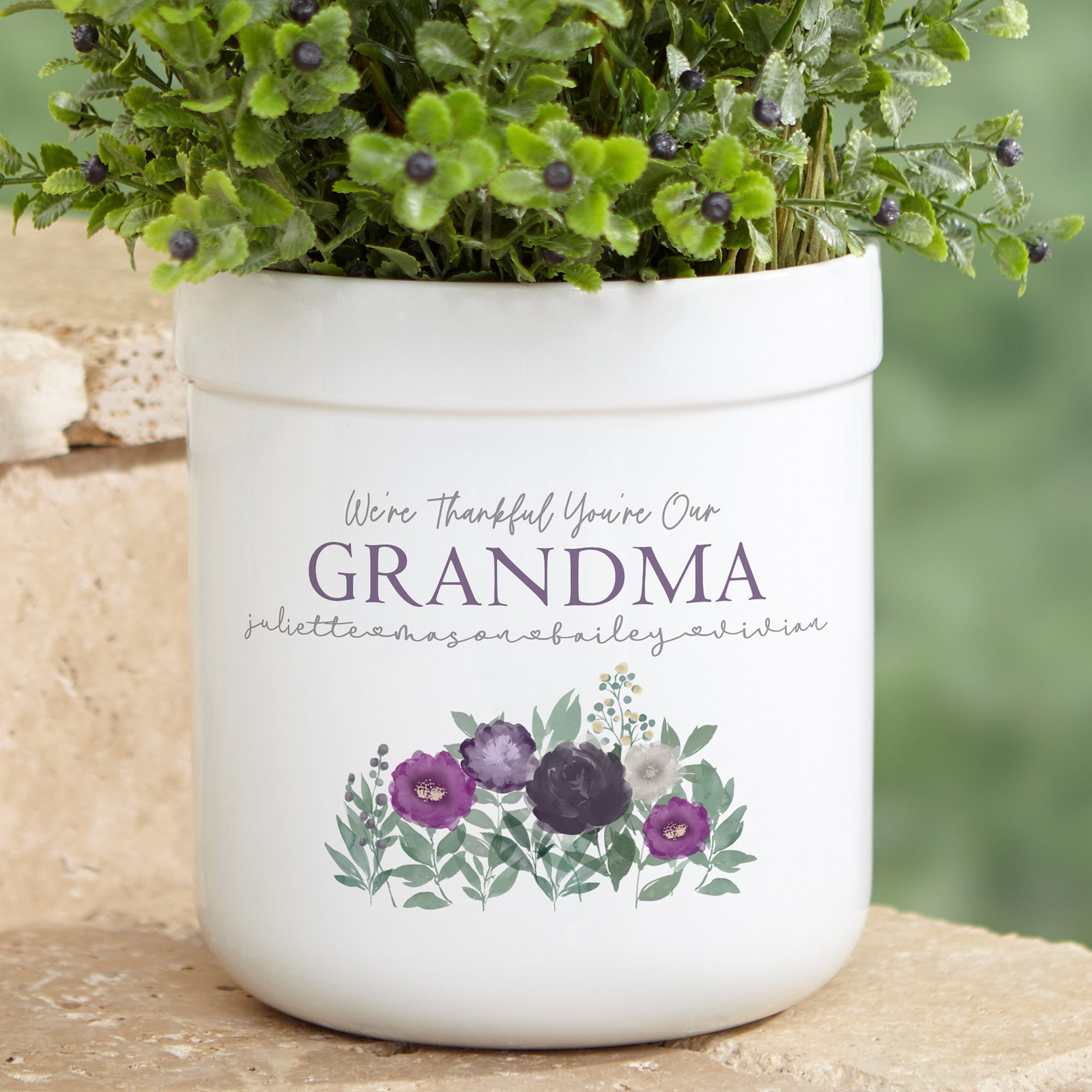Readers of this blog will surely have noticed that I am a rather conservative, almost boring type of person. So, naturally, I have no experience whatsoever with illegal drugs. Even the dealers usually notice this from a mile away, which is why I am very rarely offered any of the nasty-smelling herb. (Really only during global economic crises, as in chapter 31 of my report from Lisbon.)
I don’t even know the difference between cannabis, marijuana, hashish and weed, and I don’t know which of them you smoke, inhale, inject or eat as cookies. In any case, I am against it. Against all of it.
But even as a staunch opponent of drugs and as a friend of a clear mind, at some point you have to realize that the battle is lost. After all, you can’t wage a permanent war on drugs against your own population.

Also, putting people in prison for something that causes far fewer deaths than alcohol, road traffic, vicious dogs and – ironically – the war on drugs seems somewhat disproportionate to me. The limited and expensive capacity of the police, prosecutors, medical experts, lawyers, courts, prison and parole officers could probably be put to better use than chasing hashish hippies across Hasenheide.
In short, not everything that smells and is annoying has to be made a criminal offense.
And that’s exactly what the congenial German government thought. They introduced a bill to parliament, which, after some huffing and puffing, was passed as the Cannabis Act.
The result is, how could it be different in Germany, a carefully crafted compromise. You will be allowed to smoke more than before, but of course not everything, not always, not everywhere and not by everyone. In effect, we are somewhere between Woodstock and Singapore.
Now, because I don’t use any drugs myself, I am super efficient and I can already answer your most pressing questions about the new German cannabis law, before you even ask them:
Possession of cannabis will be legal up to a quantity of 25 grams. Because I’ve never tried the stuff myself, I don’t know whether that’s a lot. I am more of a chocolate addict, and 25 grams is barely enough for half an hour.

However, this only applies to adults and only for personal use. Children and teenagers still have to resort to beer and other alcoholic beverages. Personal use means that you are not allowed to sell the substance, give it away or share it. In this respect, cannabis users have it better than tobacco smokers, because the latter find it difficult to say no when they are asked for a “have you got a fag?” If, however, someone wants to take a puff on your joint, you can easily say no: “Sorry, dude, but the law only allows personal use.”
Friends or couples can still go out together with a joint if they have previously converted it into joint property. Then, but only then, they can also consume it together. However, the weight of the joint must not exceed 25 grams, otherwise the person carrying it would be in breach of the possession limit.

Because the purchase and sale of cannabis are still prohibited, the question arises as to where the stuff should come from. As befits a nation of foresters, fairy tales and allotment gardens, Germany is relying on home-grown cannabis.
Adults with residence or habitual abode in Germany are permitted, if they have at least one of the former for at least 6 months, to keep three cannabis plants in their home if they keep and maintain them in a species-appropriate and ecologically friendly manner. These three plants may be kept in addition to the 25 grams as long as they remain unharvested or the cannabis yield obtained from the harvest does not exceed a further 25 grams. The good old three-field system of crop rotation seems like a great idea, so that the three plants are ready for harvest at different times. However, it is important that no single plant is ever harvested for more than 25 grams.
As these three plants apply per adult in the household (if they have been living there for at least 6 months), couples or flat-sharing communities can of course grow more plants, whereby it is important to clearly assign each plant to a specific person.

As the photo insinuates, I assume that many people will soon be thinking of their previously neglected grandparents and other distant relatives: “Grandma, you always had such a green thumb! Can I put these plants in your house?” For me, these unexpected social side effects are always the most exciting aspects about new legislation.
If there are children or teenagers in the house, the plants must be kept in rooms to which the little rascals have no access. However, because the regulations on species-appropriate plant care require that the plants are exposed to sunlight and therefore face south, south-east or south-west with a window (to be cleaned every two months), in practice, especially in small apartments, you will often have to make a choice: Kids or weed. I predict a decline in the birth rate.
It also becomes tricky when a parent dies. Because then, the partner and the children usually are the heirs. According to the principle of universal succession, the inheritance is transferred directly to the heirs at the time of death, without any further legal act and without the need for consent. And, poof, the children are the owners of a drug plantation. The problem is minor for children under the age of 14, as they are still exempt from criminal culpability. But teenagers will already have one foot in jail.

You also need to be careful when moving house: As you are not allowed to carry more than 25 grams of cannabis in public, you can hardly move with three flowering plants at the same time. But you are also not allowed to give them away, because that would not be personal consumption. So you have to move gradually or destroy the plants. (I only know this from other plants, but as far as I have tried, you can destroy them by not watering them for several weeks.)
Now, of course, everyone wants to know: Where can you get the seeds or cuttings to grow your own weed? You can either order them, even via the internet, but only from EU member states. Alternatively, even if you are not a member, you can go to a so-called growers’ association and purchase up to seven cannabis seeds or up to five cuttings, but no more than five seeds and/or cuttings in total, of which no more than three may mature into fully-fledged plants.
And that brings us to the growers’ associations. This is a form of agricultural cooperative, which, at least for the East Germans among us, brings back fond memories of collective farming. I think the word “Anbauvereinigung” is a wonderful one, but I guess in popular parlance, people will refer to them as cannabis clubs.
So far, the rules that I outlined have been fairly relaxed and liberal, almost anarchic. But with cannabis clubs, the law on associations comes into play, and that’s where the buck stops and the fun ends. Growers’ associations may only be run as non-commercial associations or cooperatives, must be registered and require official permission to grow cannabis. The associations may have a maximum of 500 members, all of whom must be of legal age and have been residents in Germany for at least 6 months. They may only supply the cannabis to their members, who must also take over the cultivation themselves and personally, but collectively.

Each member may obtain no more than 25 grams of cannabis per day and no more than 50 grams per month from this collective cultivation. Members between the ages of 18 and 21 may only obtain 30 grams per month, but only up to a THC content of 10%. If a member turns 18 or 21 in the course of a month, the maximum monthly supply is adjusted in proportion to the quotient between age, number of days in the month in question, and 30 or 50 grams, respectively. For members whose place of birth lies more than six time zones east of the Central European timezone, the birthday itself is not counted.
Furthermore, these clubs need a youth protection plan (although they are not allowed to accept juvenile members), a prevention officer, only board members with no criminal record, a fence around the plantation that is at least 2.24 meters (or 1.78 meters in Saarland) high and which obstructs the view, a wastewater protection plan, a security plan, a supply chain officer, a clubhouse, a flag and an embarrassing name such as “Weedmacht”, “Little Red Riding Reever” or “Sieg High”.

The cannabis cultivation compound must be at least 200 meters away from schools, kindergartens, playgrounds, hospitals and so on. Lost places experts like me are currently in great demand to find suitable sites, such as old factory buildings. I expect an enormous boom, particularly in the eastern German states, but also a general revitalization of rural areas.


Incidentally, on the premises of the cannabis clubs, you are not allowed to consume cannabis. That would really go to far, wouldn’t it? Also, unlike in parliament, no alcohol may be served there.
Oh, I almost forgot the most important question: Where can you actually smoke the 25 grams? At home, of course. But only if there are no children or teenagers around. Nor if children or teenagers could be watching, e.g. from a neighbor’s house, from the street or from a passing train.
However, people are allowed to smoke weed freely in public. You only have to keep a distance of 100 meters from schools, kindergartens, playgrounds, children’s and youth facilities, sports facilities, churches and military bases. In pedestrian zones, smoking is only permitted from 8 pm, but then all the night until 6:59 am.
You can use this interactive map to test your neighborhood for drug suitability. You’ll be surprised how many kindergartens and playgrounds there are in your neighborhood that you hadn’t even noticed before.
I have run the test for my apartment in Chemnitz. The red zones are no-go zones. You can clearly see the advantage of living near a forest. I wouldn’t be surprised if I soon encounter many more people on my daily walks in nature than before.

For comparison, I also looked at the village where I grew up. The difference is striking and illustrates the advantages of the countryside.

For people in Berlin, I assume that beautiful Müggelheim will soon become very popular.

Keep in mind, though, that these maps work with automatically generated material and therefore overlook many children’s and youth facilities as well as sports facilities. You are really only safe in the great outdoors. Unless a a group of children is passing by. Or a school bus.
In principle, all bus stops where school buses stop must be kept cannabis-free on school days from 6:30 to 8:30 and from 12:15 to 16:30. Except during school holidays. If school is canceled, e.g. due to flooding, the child cannabis protection is only waived if the school cancellation was communicated at least 24 hours in advance, because otherwise it cannot be ruled out that a child did not hear about the cancellation and will still be at the bus stop. During school hours, cannabis consumption in the car is therefore prohibited as long as you are driving on a route that is also frequented by school buses. Unless you have tinted windows. In Thuringia, September 20th is World Children’s Day, which is a smoke-free public holiday. Special rules also apply in the northern German states whenever the wind force exceeds 6 Beaufort. The 100-meter zone is then adapted to the direction of the wind. In westerly winds, for example, it is shifted 20 meters per Beaufort point to the east. Vacation resorts, health resorts, church institutions, independent public corporations, universities, religious communities not recognized as churches, NATO military training areas, the German Patent and Trademark Office, embassies, consulates, chambers of trade, dyke associations, ski lifts and the Federal Waterways and Shipping Administration may issue their own regulations, which must however (except in the case of federal authorities or foreign, supranational and international institutions) comply with the administrative regulations of the respective state. In areas with elevated radon levels in the soil and in former uranium mining areas, both of which are particularly relevant in Saxony, smoking is only permitted from the 2nd floor upwards.
One issue has, in my opinion, not been sufficiently clarified: What happens in the border regions if there is no prohibited facility within a radius of 100 meters in Germany, but there is a kindergarten or a playground less than 100 meters away on the Polish, Belgian or Czech side?
In effect, smoking weed will become something really bureaucratic and uncool. I myself will stick to tobacco, where I can rely on the Supreme Court decision BVerfGE 80, 137, which ruled that anything you do in the forest falls under the “unhindered unfurling of one’s personality”, protected under Art. 2 para. 1 of the German Federal Constitution.

Links:
- More reports about politics and law.
- And some of my crazy drug stories.
- As you can see, I have no idea about narcotics law. But I am happy to help with the really important legal questions in life.



I stop ✋ smoking cannabis for a year or more now but for my anxiety 😬 CBD is okay ✅ but it cost here in Georgia 🇬🇪 more than normal one ☝️ so my plans all depends on Doctors 🥼
Oh, I should have mentioned that cannabis for medical use has been allowed in Germany for a long time.
That will continue to be governed by a different law, of course. After all, things need to remain complicated. 🙃
I’m wondering if one must assume a particular posture, or sing a particular song while consuming? 😂
I imagine when these complicated laws are written that they have a days long “What if…” brainstorming session.
You are right, these details are dangerously underregulated!
Also, I am surprised there is no list of computer games and movies that you are not allowed to combine with the use of cannabis.
I can see that life is becoming more difficult by the day in Germany
Oh no! For us, it’s quite the opposite.
Without such fine-tuned and detailed rules and regulations, we would be totally lost, because we wouldn’t know what to do. :-)
Hi Andreas. I can’t find any information on the distinction between flowering and non flowering plants as it applies to maximum a person can grow privately. It’s implied by the 5 cuttings per month rule that cuttings aren’t included in your “plant count” , but I can’t find laid out explicitly. Can you clarify this for me?
Btw, your image of home growers harvesting one plant at a time, while sensible, will be quite rare. I expect many hobbyist growers will find the 3 plants rule very restrictive. Not because they want kilos of weed but because they’re obsessed with variety and experimentation. If you know any gardeners who specialise in a particular species you’ll understand the mentality of most home growers. imagine telling a wine enthusiast they can only have 3 varietes of wine for the next year.
I’m sure many will now try to grow a plant or 2 at home but within a year I expect only the obsessive hobbyist types will still be growing. The research, expense, effort and time required to grow a plant and produce something comparable to “coffee shop” or medical cannabis just isn’t worth it for most people. Especially now that they can legally get it from a club. Think of people baking their own bread. The first few attempts probably a bit of a disaster and highly unlikely to compare well to the local bakery.
It’s great that ordinary people will no longer be prosecuted for possession, but the home grow regulations make very little sense. I expect lots of home growers will break the rules ,it will be interesting to see how they’re treated by the law.
As far as I understand, the cuttings are only to start your farm or to replenish trees/bushes that have died, given up or been stolen.
For the enthusiasts who need a hundred different types of flavor, they either need to have a very large extended family, harboring their pots for them, or they need to join one of the cultivation associations. (Although the latter also isn’t as easy as getting bread from a bakery.)
For me, home growing and harvesting would be far too much effort. And the equipment is bloody expensive, too.
But then, people have different hobbies, and DIY seems to appeal to many people.
I guess we are soon going to be swamped with proud photos of little plants on Facebook and Instagraph.
As to the legal treatment of home growers, it will probably differ from state to state. While drug/criminal law is federal law, the police and the prosecution are state institutions. They can decide to look very carefully or they can decide that they have more important things to do.
I have a feeling that it will mostly be accidental finds, when police are searching your home for something completely different. Or probably in contested child custody disputes, where one parent will try to portray the other parent as a drug lord.
Te confieso algo, probé mariguana a mis 23 años, solo por el afán de saber como era. Terriblemente desagradable, las sensaciones se intensifican, el dolor, la tristeza, es horrendo, se repiten y se repiten. Recuerdo haberme mareado y golpeado una rodilla, la sensación se repetía mucha veces en mi cabeza. Y el olor … luego de mi prueba podía saber quienes la consumían, por el olor de esa yerba. Nunca mas volví a repetir.
Aquí en Bolivia no existe control, muchas personas la cultivan en sus jardines, pese a existir restricciones claras. De hecho una amiga que la cultivaba me regalo el paquete para que yo la probase, luego de mi prueba vote el resto a la basura. Espero que ella nunca lea tu blog o se va enojar conmigo. Por confesar abiertamente que desperdicie su regalo.
Ahora tengo otra adicción verde : la yerba mate (Ilex paraguariensis), no se si algún día la probaste cuando visitaste Sudamérica, es como beber café, pero verde. Y sabe mejor que la coca.
No he probabdo yerba mate, pero a mi me encanta el te de coca. Realmente me falta en Europa, especialmente después de haber comido rico/grueso.
En Cochabamba, tenía un coinquilino fumando marijuana todos los dias, pero yo nunca tenía interés en probarlo. Ya no me gusta el olor. Y muchos de los consumidores parecen un poco lentos y somnolientos después. No es lo que quiero.